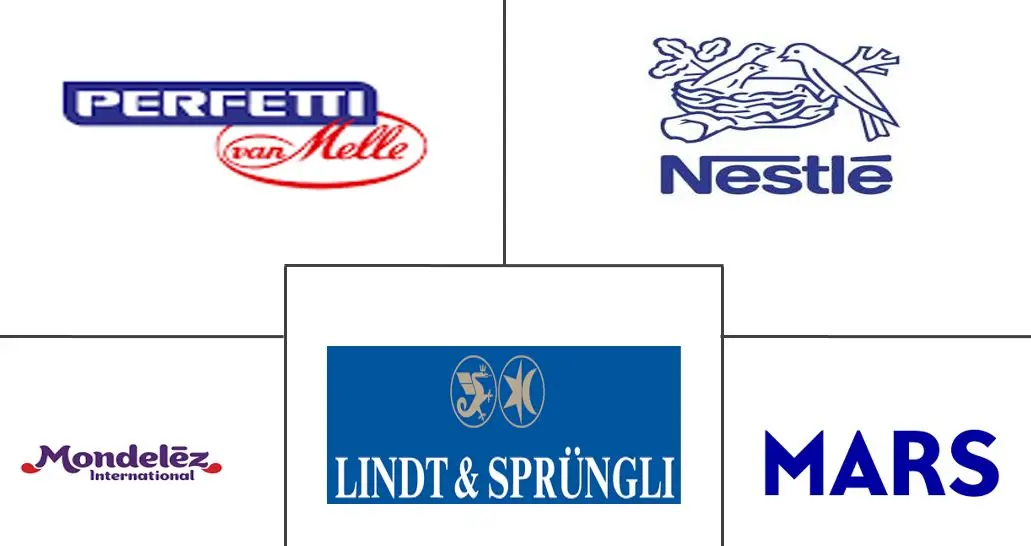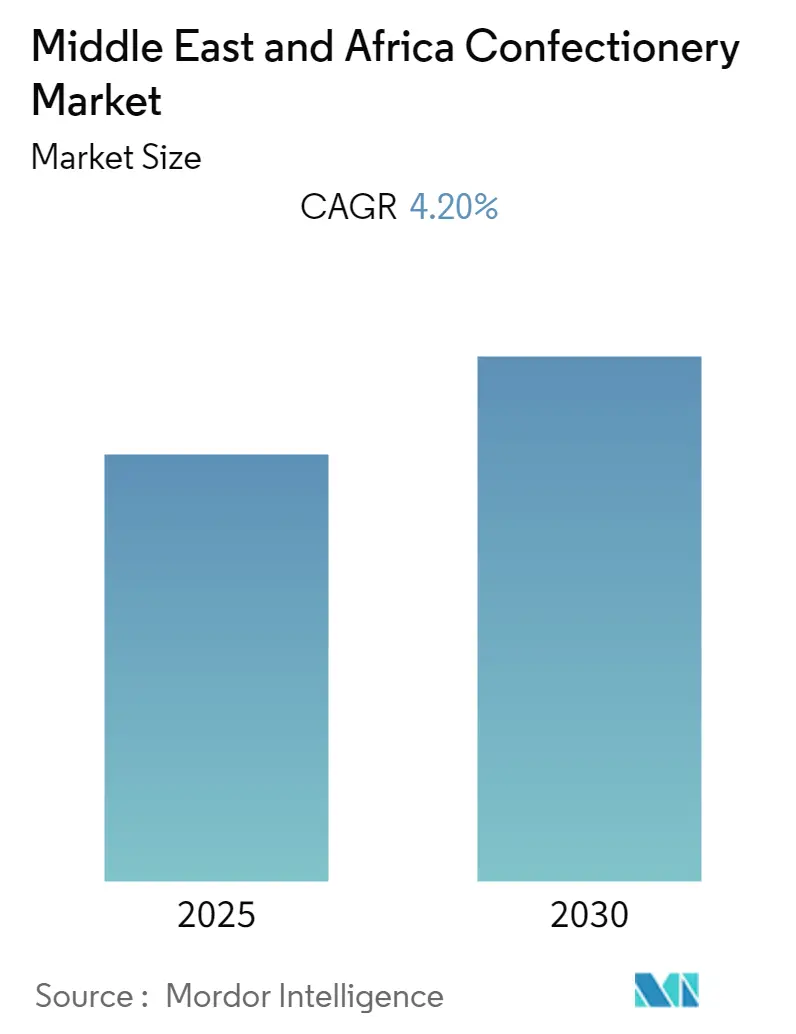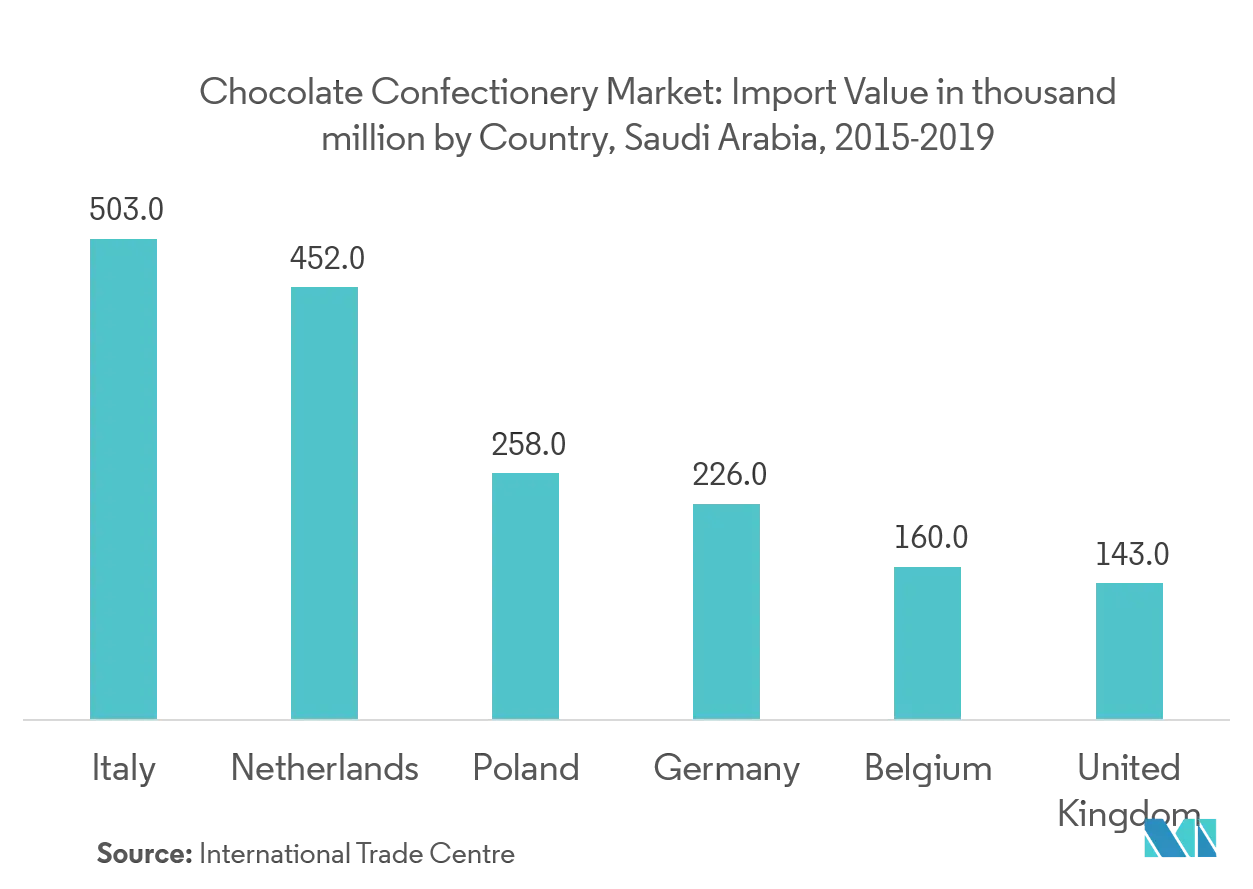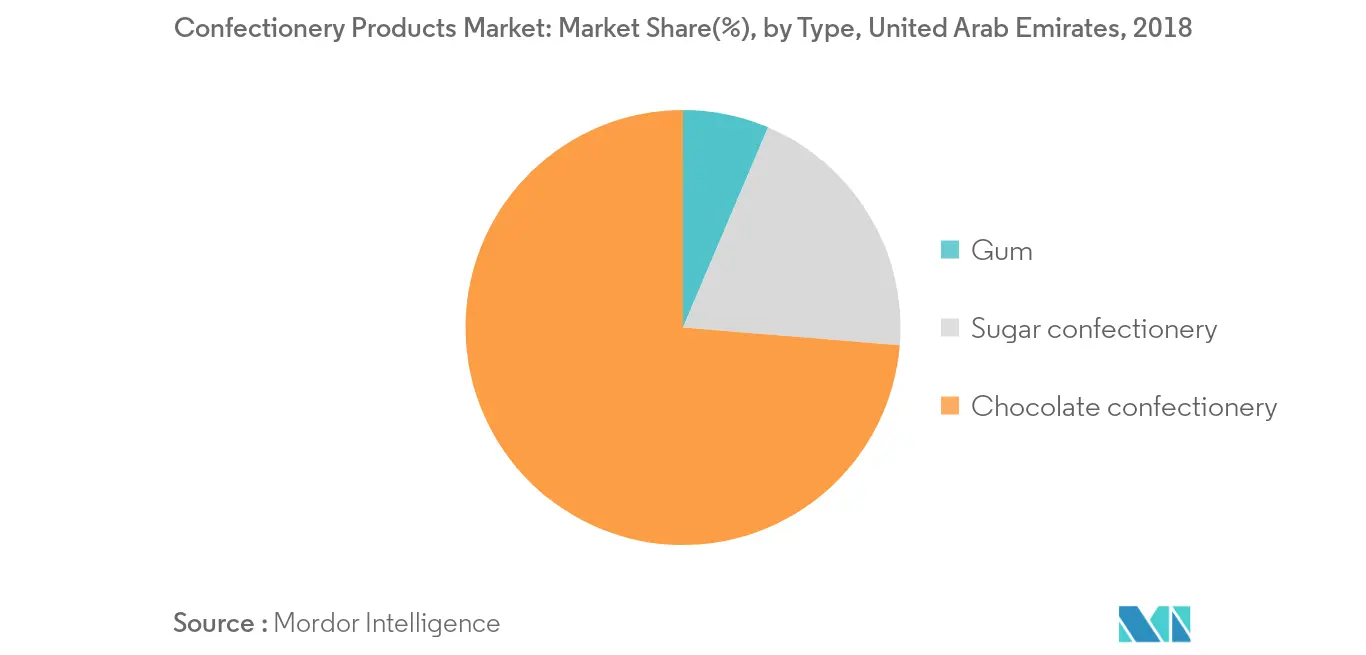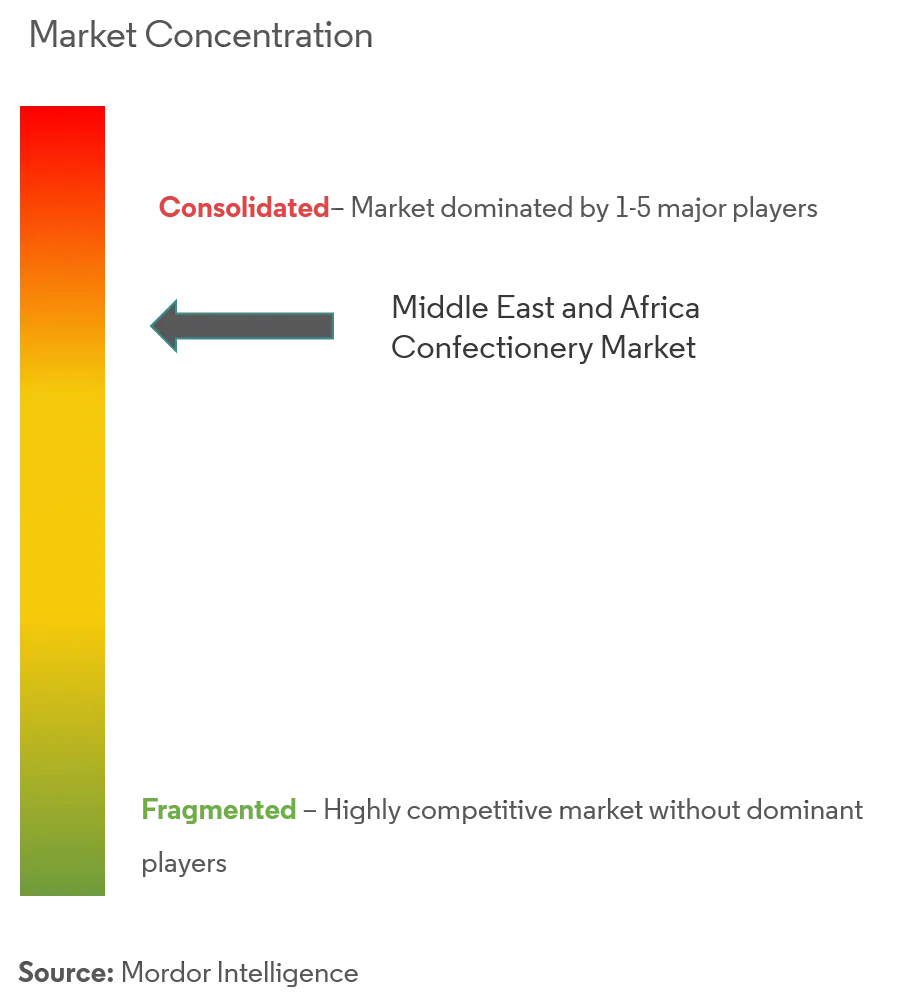MEA Confectionery Market Analysis
The Middle East & Africa Confectionery Market is expected to register a CAGR of 4.2% during the forecast period.
- With a recovery in economic growth and appreciation of the local currency, following the recession and severe depreciation in 2016, the chocolate market witnessed significant value growth in 2017 in major African countries, such as Nigeria and South Africa.
- Despite the increasing economic difficulties in Middle East & Africa, the key players maintained its leadership by focusing on heavy discounting and in-store promotions throughout the year, mainly in supermarkets and hypermarkets.
- Premium brands, however, have an affluent consumer base, and they are well placed on maintaining or increasing retail value shares, which is supporting the market growth. Major players include Mondalez International, Nestle, Lindt & Sprungli AG, Hertshey's, and Mars Incorporated.
MEA Confectionery Market Trends
INCREASING DEMAND FOR PREMIUM AND ARTISAN CHOCOLATES
The shift in attitudes is forcing global firms, like Mars Inc., Mondelez International, and Nestle, to rebrand or reformulate its mass-market chocolates to create a healthier image or sell a more expensive premium experience. The consumers in Middle East & Africa are becoming more sophisticated and increasingly searching for premium chocolate products that are differentiated from common brands found in the retail sector. This has resulted in a surge in demand for high-quality premium chocolate products. For instance, the introduction of Lindt and Ferrero, a little over a decade ago, considerably raised the profile of premium chocolates in South Africa. In Middle East, many companies in and outside the region are catering to its growing standard and premium chocolate market. For instance, in Qatar, the chocolate producer Kaafe, established in 2011, sells 'premium hand-made Belgian chocolates' with an 'Arabic taste.' Another chocolate company in Bahrain, Chocolate & Co, focuses on premium chocolate, combining skillful artisans with a state-of-the-art manufacturing process to make products out of 'fine Belgian chocolate' and quality ingredients from around the world.
THE UNITED ARAB EMIRATES EMERGES AS THE FASTEST GROWING MARKET
The chocolate confectionery market in the United Arab Emirates continued to be characterized by strong promotional activity in 2019, as manufacturers competed intensely for volume share. Consumers in the country are actively looking for healthier options, such as low calorie, high cocoa, and functional ingredients based confectionery. A functional claim on the confectionery products label is proliferating. In recent years, there has been a significant increase in the number of products launched in sugar-free gums, energy chews, and candy. In May 2017, Premium and Halal certified chocolate maker, Patchi doubled its production capacity to 10 MT in the United Arab Emirates, owing to increase demand. Patchi's current facility at Dubai Industrial Park is halal-certified, which is the first halal luxury chocolatier in the United Arab Emirates.
MEA Confectionery Industry Overview
With a huge global presence and wide distribution networks, the key players, such as Mars Incorporated, Mondelez International, Ferrero Group, Lindt & Sprungli AG, Nestle, and Hershey's, hold the prominent shares in the Middle East & Africa confectionery market. The companies, like Mars Incorporated, held a prominent share in the market studied, due to the wide product portfolio, expanded production facilities, and a broad distribution network. Demand for boxed assortments is benefiting from intense innovation and promotional activities from the local manufacturers, such as Dadash Baradar Co. and Shirin Asal Co. The increasing popularity of highly advertised brands, such as Lindt Excellence (Chocoladefabriken Lindt & Sprüngli AG), and new launches, such as Galaxy Smooth Dark (Master Foods), are expected to contribute largely to boost the demand for dark chocolate, which is perceived as healthy chocolate.
MEA Confectionery Market Leaders
-
Nestle SA
-
Mondelez International
-
Chocoladefabriken Lindt & Sprungli AG
-
Mars Incorporated
-
Perfetti Van Melle Group B.V.
- *Disclaimer: Major Players sorted in no particular order
MEA Confectionery Industry Segmentation
The Middle East and Africa confectionery market is segmented into segments, such as product type, distribution channel, and geography. Under the product type, the market is segmented into chocolate (softlines/selflines, boxed assortments, countlines, molded chocolate, and other chocolates), sugar confectionery (mints, pastilles, jellies and chews, toffees, caramels and nougat, Lollipops, and other sugar confectionery products), gums, and snack bars (cereal bars and energy bars). By distribution channel, the confectionery market is segmented into supermarkets and hypermarkets, convenience stores, online retail stores, and other distribution channels. The market is studied thoroughly for different countries under the region to provide a broader perspective of the market.
| By Product Type | Chocolates | Softlines/Selflines | |
| Boxed Assortments | |||
| Countlines | |||
| Molded Chocolate | |||
| Other Chocolates | |||
| Gums | |||
| Sugar Confectionery | Mints | ||
| Pastilles, Jellies, and Chews | |||
| Toffees, Caramels, and Nougat | |||
| Other Sugar Confectioneries | |||
| Snack Bars | Cereal Bars | ||
| Energy Bars | |||
| By Distribution Channel | Supermarkets/Hypermarkets | ||
| Convenience Stores | |||
| Online Retail Stores | |||
| Other Distribution Channels | |||
| By Country | South Africa | ||
| Saudi Arabia | |||
| United Arab Emirates | |||
| Qatar | |||
| Rest of Middle East & Africa | |||
MEA Confectionery Market Research FAQs
What is the current Middle East & Africa Confectionery Market size?
The Middle East & Africa Confectionery Market is projected to register a CAGR of 4.2% during the forecast period (2025-2030)
Who are the key players in Middle East & Africa Confectionery Market?
Nestle SA, Mondelez International, Chocoladefabriken Lindt & Sprungli AG, Mars Incorporated and Perfetti Van Melle Group B.V. are the major companies operating in the Middle East & Africa Confectionery Market.
What years does this Middle East & Africa Confectionery Market cover?
The report covers the Middle East & Africa Confectionery Market historical market size for years: 2019, 2020, 2021, 2022, 2023 and 2024. The report also forecasts the Middle East & Africa Confectionery Market size for years: 2025, 2026, 2027, 2028, 2029 and 2030.
Our Best Selling Reports
MEA Confectionery Industry Report
Statistics for the 2025 Middle East & Africa Confectionery market share, size and revenue growth rate, created by Mordor Intelligence™ Industry Reports. Middle East & Africa Confectionery analysis includes a market forecast outlook for 2025 to 2030 and historical overview. Get a sample of this industry analysis as a free report PDF download.

